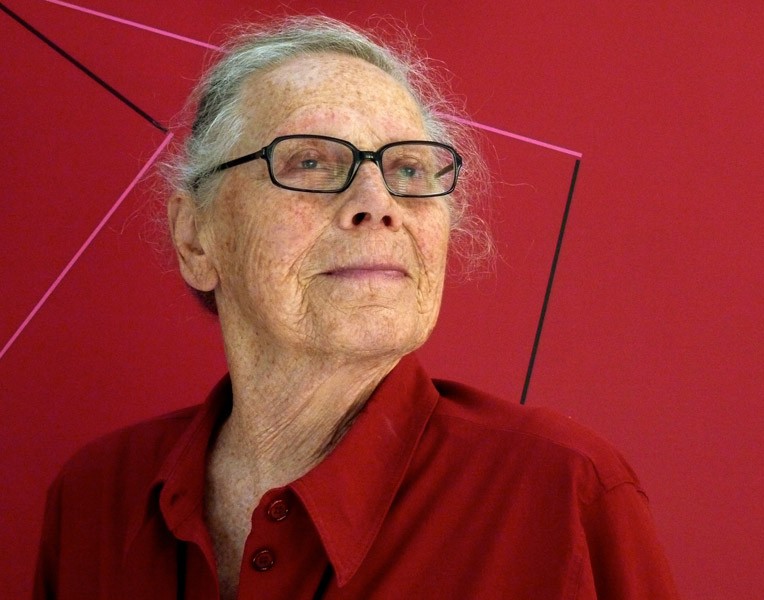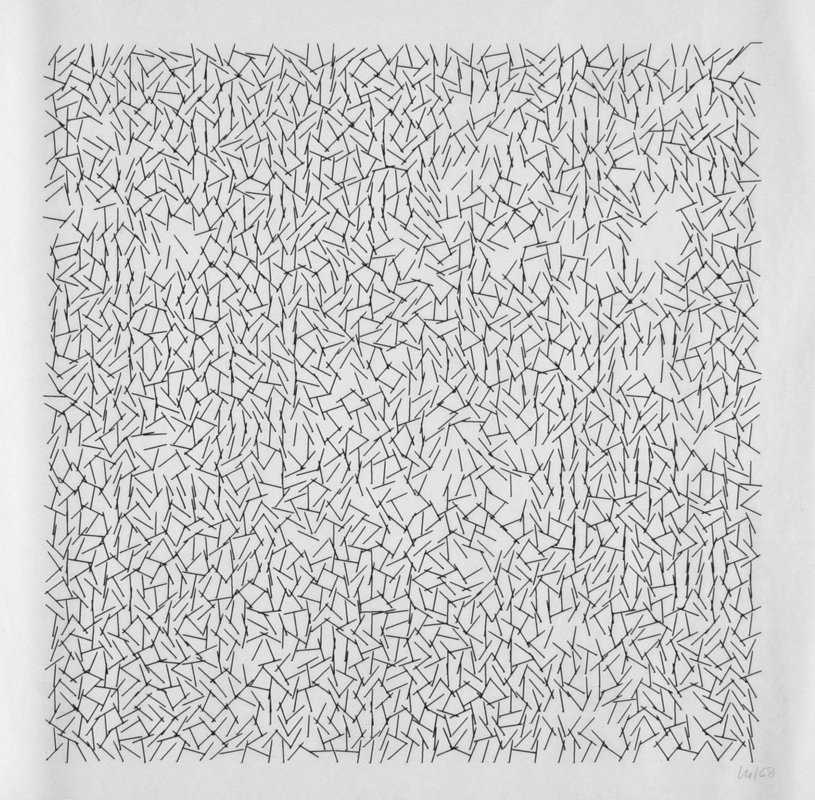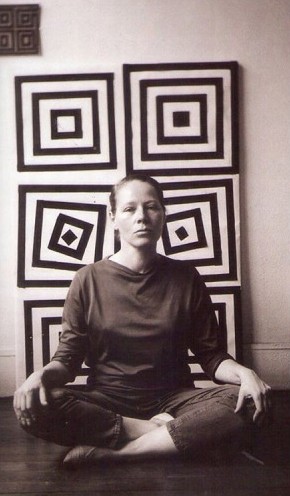Agenda
- An important change regarding assignment submission.
- Examples of Assignments
- Tasting: A Few Generative Artwork Systems
- Deep dive: Vera Molnar
- A/B Exercises. Drawing-A
Tasting: A Few Generative Artwork Systems
Here is a very tiny selection of some generative artworks.
- Some quickly-developed generative leaves by Ilana Katz, 2021
- Matthias Dörfelt, Munching, 2014
- Kate Compton, Puppets, 2017
- Everest Pipkin, Mirror Lake, 2015
- Robert Hodgin, Meander generative map (including his signature)
- Lingdong Huang, Shan Shui (2018) and photos
- Jessica Rosenkrantz & Jesse Louis-Rosenburg (Nervous System): Growing a Hyphae Lamp process and results; generative jigsaw puzzles; Cell Cycle custom ring; Kinematics Dress
Here are a few more generative artists:
- 1st Generation (active since late 1960s): Charles Csuri (*1922), Herbert W. Franke (*1927), Jean-Pierre Hébert (*1939), Manfred Mohr (*1938), Vera Molnar (*1924), Frieder Nake (*1938), Georg Nees (1926-2016), A. Michael Noll (*1939), Lillian Schwartz (*1927), Roman Verostko (*1929), Edward Zajec (*1938);
- 2nd Generation (active since early ’80s): Karl Sims (*1962), William Latham (*1961), Mark Wilson (*1943);
- 3rd Generation & younger (active since late ’90s): Marius Watz, Lia, Casey Reas, Michael Hansmeyer, Quayola, Jonathan McCabe, Allison Parrish, Mitchell Whitelaw, Tina Frank, Memo Akten, Marcin Ignac, Leonardo Solaas, Philip Rideout, Mario Klingemann, Frederik Vanhoutte, Karsten Schmidt, Madeline Gannon, Caitlin Morris, Neri Oxman.
Deep Dive: Vera Molnar
Vera Molnar, born 1924, is a living (!) Hungarian-French artist who was one of the first ten people to make art with a computer. In 1968, Vera Molnar started working with a computer at the experimental psychology lab in Sorbonne, where she created her first plotter drawings, applying what she had been exploring in earlier years without using a machine.


She wrote: “Thanks to its many possibilities of combination the computer helps to systematically research the visual realm, helps the painter to free herself from cultural ′readymades′ and find combinations in forms never seen before, neither in nature nor at a museum: It helps to create inconceivable images. The computer helps, but it does not ′do′, does not ′design′ or ′invent′ anything. To avoid another misunderstanding I wish to underline something else: The fact that something is new and has not been seen before is no guarantee in any manner for its aesthetic quality. Was the portrayal of a young man with curly hair − Dürer′s self-portrait from around 1500 − new?”
(Watch from 15:10)
Here’s Vera Molnar in the mid-1960s:

An important change regarding assignment submission.
For the past decade, I have had students post assignments on WordPress. (See this example.) This has the advantage of encouraging disciplined documentation practices. It also makes it easy to have external reviewers.
This semester, one of my colleagues recommended having students post assignments within Discord, but, now having tried it, it isn’t working for me. So while we will definitely continue to use Discord for chats and discussion, all assignments following after Deliverables-01 will be posted to this WordPress site.
To do this, I will need to know your preferred username, which I recommend be anonymous, and for you to sign a FERPA waiver. You’ll do that using the form below.